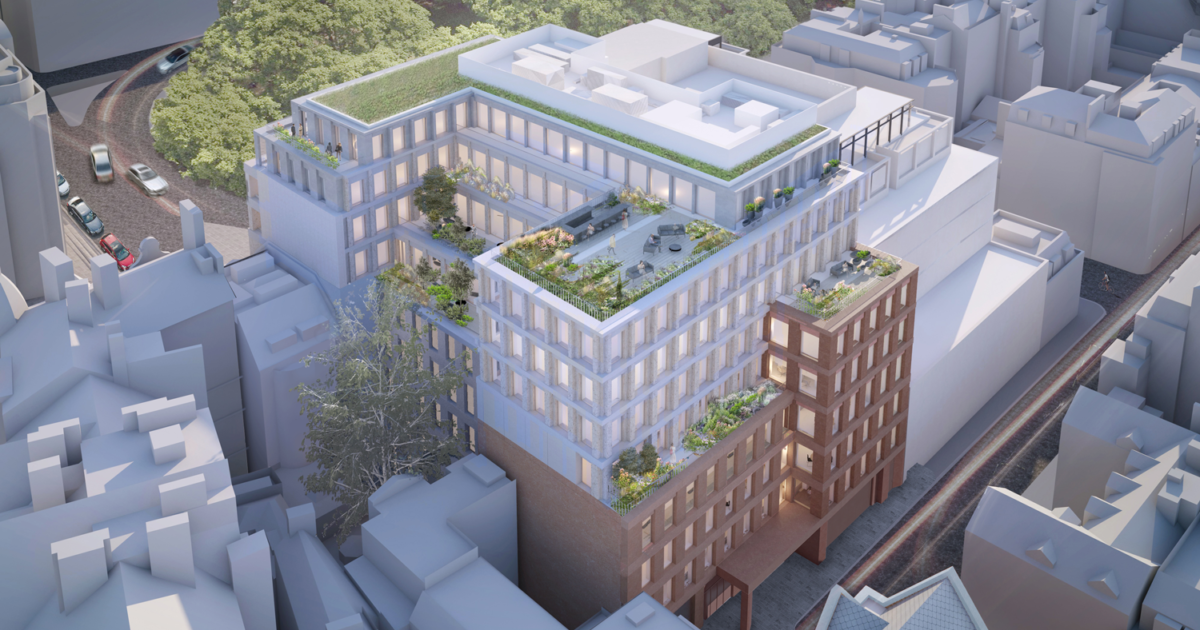Profits set to hit £820m at Taylor Wimpey
Taylor Wimpey is on course to post an operating profit of £820m this year as the house builder delivered a record first half performance.
The firm completed 7,303 homes in the six months to July 4 2021 compared to 2,771 last year as pre-tax profit recovered to £287.5m from a £39.8m loss on revenue up to 2,196.3m from £754.6m.
Pete Redfern, Chief Executive,said: “We have delivered a record first half performance and a strong operating profit margin performance of 19.3%, which reflects tight cost discipline as well as higher completions in the period.

“Our focus remains on driving further improvement in our operating profit margin and accelerated outlet-driven volume growth from 2023.
“Backed by last year’s equity raise we stepped up our activity in the land market before competition returned and we successfully increased our land pipeline with high-quality sites that will deliver a strong financial performance.
“We are progressing this land through the planning stages as expected, providing excellent momentum for growth, enhanced returns for our stakeholders and increased numbers of new homes.

“We have a clear purpose to deliver high-quality homes and create thriving communities and a strategy to ensure the long term sustainability of the business.
“We now expect to deliver 2021 full year Group operating profit of c.£820 million, above the top end of consensus, with UK completions (excluding joint ventures) expected to be towards the upper end of our guidance range of 13,200 to 14,000.”
Taylor Wimpey is now targeting profit margins of 22% and added “looking further ahead, we have excellent momentum going into the medium term and are well positioned for accelerated volume growth from 2023.”

The firm has set aside £165m for fire safety cladding. It said: “Where we own the buildings, we are undertaking assessments on the buildings and where works are required, we are procuring those works. Where a third party owns the building and we have been contacted by the freeholder or management company we are engaging with them in relation to the assessment process.”
Taylor Wimpey said rising house prices were offsetting increases in materials.
It said: “Whilst there is pressure on pricing and supply chains for certain materials such as timber and steel owing to strong global demand, healthy increases in house prices are fully offsetting build cost inflation.

“Our central procurement team and logistics business continues to work closely with our supply chain to understand and track the origins of our components and subcomponents and stocking levels within the supply chain. This helps provide visibility of our materials supply, identifying and pre-empting potential bottlenecks.”


Did you miss our previous article…
https://www.arizonasolarsociety.com/?p=240
Mace wins green Mayfair office scheme
Mace has been appointed by property investor Astrea to deliver a major new office scheme at 38 Berkeley Square in London.
Located in the heart of Mayfair, the project will provide 85,000 sq ft of premium office space across nine stories with over 7,000 sq ft of communal terracing.
Toureen Group is understood to have secured the enabling and foundations package for the job, which is Mace’s first with Astrea.
Mace is working towards the highest sustainability standards for the project of BREEAM Outstanding, WELL Platinum and LEED Gold. The building will also achieve WiredScore Platinum.
Designed by architects Piercy & Company, the transformation of 38 Berkeley Square will involve using a mix of precast facades and Portland stone.

Completion is expected in the first quarter of 2024.
Ged Simmonds, Managing Director for Commercial Offices and Residential at Mace, said: “We are delighted to work on the transformation of 38 Berkeley Square, on behalf of Astrea.
“Our team will support the client’s vision for a destination office space with an innovative sustainability strategy, minimising carbon emissions during demolition and build.”
Did you miss our previous article…
https://www.arizonasolarsociety.com/?p=237
How to Go Solar – Do It Yourself and Save Money
There is an increased awareness these days about green technology. As the world faces energy problems, the demand for solar power equipment and services has grown tremendously. Solar energy is free and environmentally friendly. So why not seriously consider solar power as an option for your home?
Homeowners are now installing solar power systems, and the growing number of such installations indicates the increasing interest in energy conservation worldwide. There are three critical elements in a solar power setup: solar panels, solar power converters, and solar mount. All three can be installed by homeowners, however, for those who know a great deal about these energy-efficient devices, installation can be a little more complex. For those homeowners without a lot of experience with these devices, professional installation is advised. However, most experts would suggest residential customers that are up for the challenge to do the work themselves.
The panels or solar cells, as it is called, are used to collect the sun’s rays and convert them to electricity or gas. The number of solar cells required to produce sufficient energy will depend on the household electrical needs. Typically, each panel can hold enough energy for one or two standard-sized American houses.
The solar panels installed should be mounted on the roof, ideally at an angle so that maximum sunlight is received. A flat surface is preferred, but a slope can be used if desired. Mounting the panels is the first step in the process, followed by installation of the battery and the power inverter. Battery installation is important because the amount of energy needed to charge the battery depends on how much total energy is available during the day. Without the battery, the total cost of the system is going to be much higher.
In many areas, the cost of purchasing and installing a solar panel system may be covered in one or two payments. In some areas, the amount of money homeowners spend on the system will include the cost of batteries and other equipment. The number of months the system is expected to provide adequate energy is another factor that must be considered before making a purchase. The longer the system is expected to last, the more energy is needed to recharge the batteries. Most people are able to pay for the panels and batteries over the course of several years, with the balance paid back after the energy is used.
Installing the solar panel system may be required by local authorities. In addition, utility companies may need to approve the installation. Before a homeowner installs the system, he or she should be sure that there are no energy interruptions due to inclement weather, such as cloudy days or overcast skies. Also, the homeowner should make certain the system receives plenty of sunlight during the day. Although some areas are known for having plenty of sunlight, others do not have sufficient sunshine to meet the energy needs of the panel system. If the homeowner wants to use less solar energy, it’s a good idea to find out ahead of time how much sunlight will be available in the area.
In areas where the amount of sunlight is known to be scarce, solar systems might not be the most practical option. Even if the amount of sunlight is abundant, homeowners should realize that using the sun’s energy requires more energy than is required by utility companies. In most cases, installing a solar system will require a large upfront investment.
Many people decide to go solar power systems because they want to do their part in helping the environment. The system is relatively inexpensive and most people are able to pay the initial installation costs, which will then pay for itself over time. For those who live in remote areas where access to electricity is limited, the power system can often meet all of their energy needs, with a little bit of added help from utility companies.